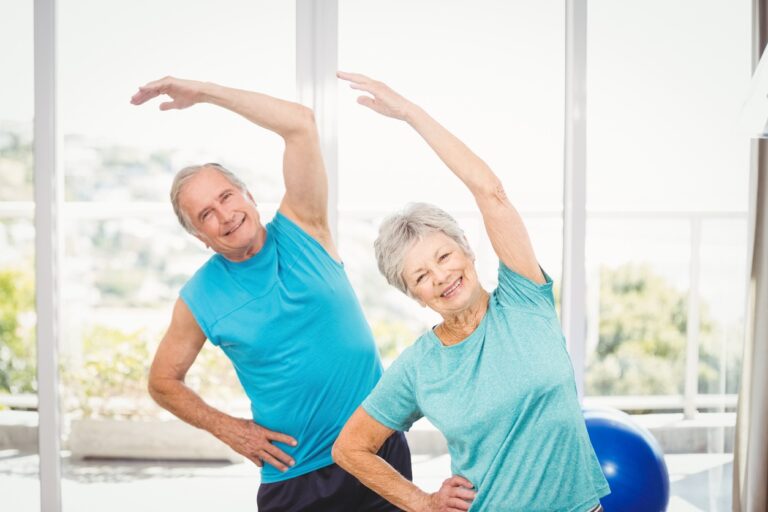Staying active does not have to mean going to the gym or joining a fitness class. For seniors, regular movement at home is one of the best ways to maintain independence, boost energy, and prevent health issues.
Simple exercises, light daily tasks, and safe routines can all add up to meaningful activity without ever stepping outside.
In this guide, we’ll look at why movement matters, the best at-home activities for seniors, and how families can encourage loved ones to stay active in ways that are safe, practical, and enjoyable.
Why Staying Active Matters for Seniors
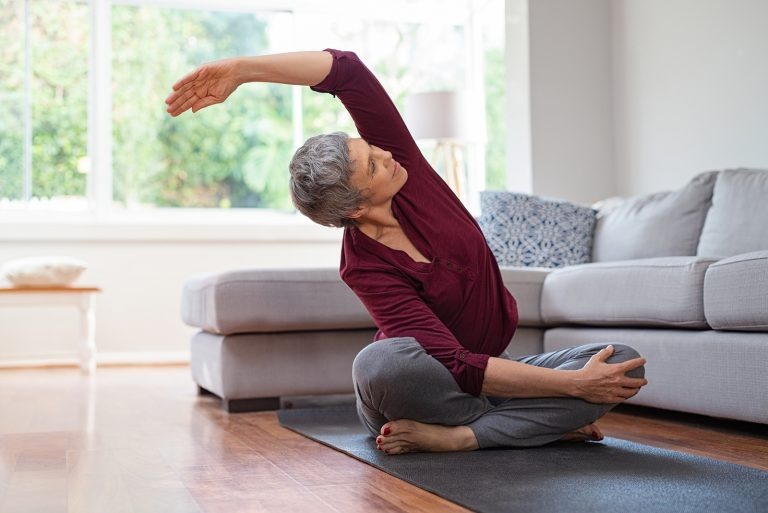
Staying active is one of the most important parts of healthy aging. Physical activity helps maintain strength, balance, and flexibility, which reduces the risk of falls, the leading cause of injury among older adults. Even small amounts of daily movement improve circulation, protect joints, and keep the body functioning well.
Activity also benefits the mind. Gentle exercise has been linked to improved mood, sharper thinking, and better sleep. Seniors who stay active are less likely to experience depression or cognitive decline, and many report feeling more confident and capable in daily life.
Movement is also about independence. When seniors can perform simple activities, like standing up without help, walking across the room, or carrying light objects, they are better able to care for themselves. This reduces the need for outside assistance and helps them remain comfortable in their own homes.
According to ElderSavvy, most seniors want to stay in their own homes as they age. In fact, about 90 percent of adults over 65 say they prefer to age in place rather than move into a facility. Supporting this goal starts with daily activity.
When seniors keep moving, they maintain the mobility, strength, and confidence needed to live independently.
Safe and Simple At-Home Exercises
You don’t need a gym to stay active. With a few safe and gentle movements, seniors can build strength, improve balance, and keep joints flexible right from home. Here are some simple routines that make a big difference.
1. Chair Exercises
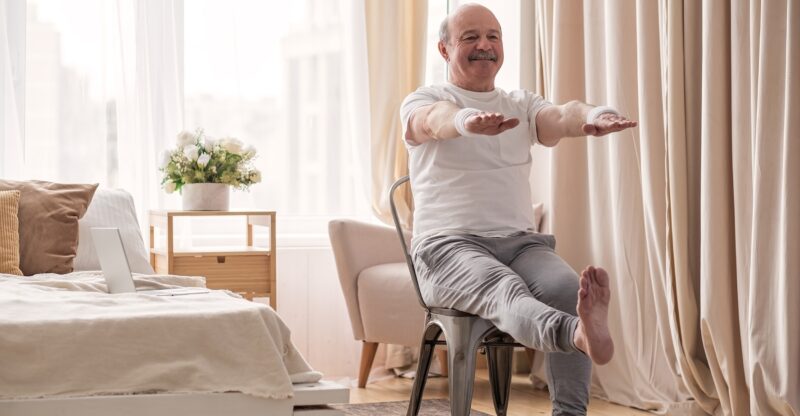
Chair exercises are perfect for seniors with limited mobility or balance concerns. Seated leg lifts help strengthen thigh muscles, while arm raises improve circulation and maintain shoulder flexibility. Even gentle twists while seated can loosen the spine and reduce stiffness. These exercises are easy to do while watching TV or reading.
2. Stretching and Flexibility Routines
Daily stretching helps ease tight muscles and keeps joints flexible. Seniors can try gentle shoulder rolls, side bends, or hamstring stretches while holding onto a sturdy surface for support. Stretching improves posture, reduces aches, and makes everyday movements like bending or reaching easier.
3. Balance Training
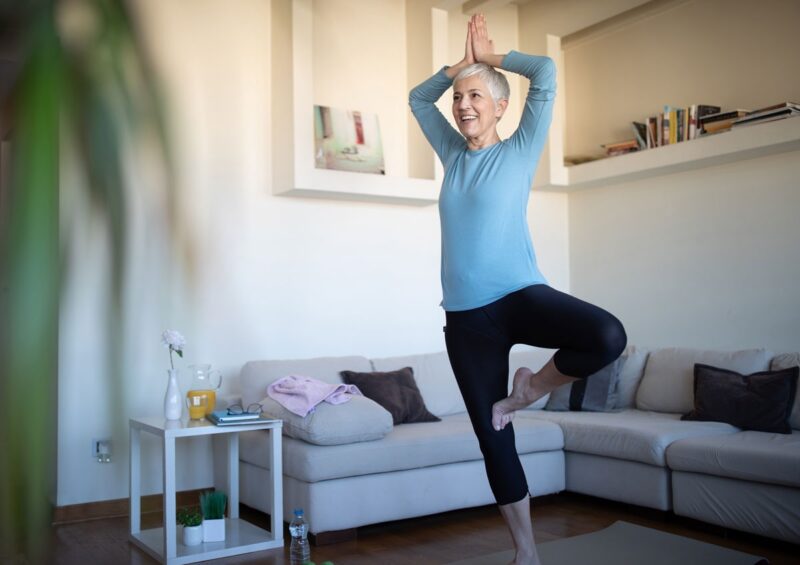
Improving balance is one of the most effective ways to prevent falls. Simple exercises such as heel-to-toe walking, standing on one leg while holding a chair, or shifting weight from side to side build stability. Practicing balance for just a few minutes each day helps seniors feel more confident when moving around their homes.
Light Strength Training
Maintaining muscle strength is vital for independence. Resistance bands or light hand weights are excellent tools for seniors. Exercises like bicep curls, shoulder presses, or gentle squats (using a chair for support) help with everyday tasks such as lifting groceries or standing up from a chair. Strength training also supports bone health.
Low-Impact Cardio
Cardio does not have to be intense to be effective. Marching in place, side steps, or light dancing are fun ways to get the heart pumping without straining joints. Even ten minutes of low-impact cardio a few times a day can improve circulation, boost energy, and support heart health.
Everyday Activities That Count as Exercise
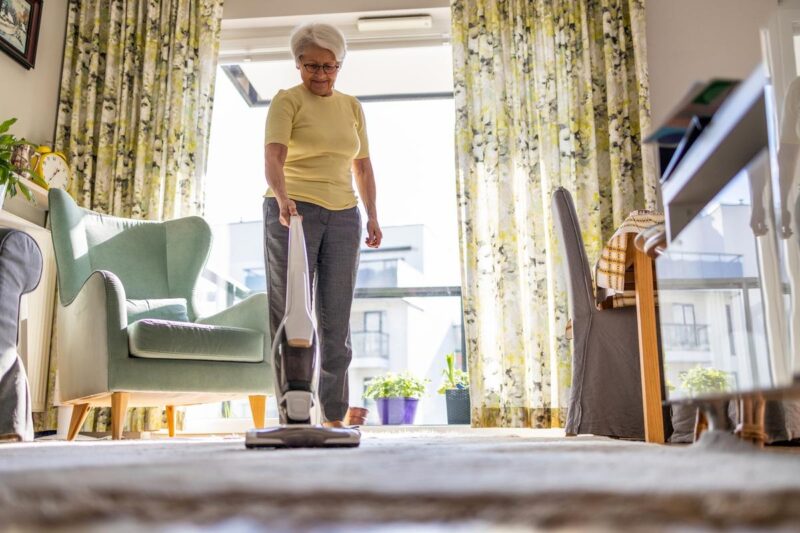
Not all activity has to look like exercise. Many daily tasks around the home naturally keep seniors moving and engaged:
- Gardening or watering plants: Builds strength, stretches muscles, and adds fresh air when done outdoors.
- Light housework: Sweeping, vacuuming, or folding laundry keeps the body active while maintaining a clean environment.
- Cooking and meal prep: Involves standing, reaching, and light lifting, which all contribute to mobility.
- Walking around the house: Taking extra steps between rooms or climbing stairs adds to daily movement.
- Playing with pets or grandchildren: Fun interactions that also encourage bending, stretching, and walking.
Tips for Keeping Seniors Motivated at Home
Staying active is easier when it feels enjoyable and consistent. Here are some simple ways to help seniors stay motivated with their routines:
- Set small, realistic goals: Encourage doing a few minutes of movement at a time rather than long sessions. Progress feels more achievable this way.
- Make it fun with music: Playing favorite songs during exercise adds energy and makes movement enjoyable.
- Use variety: Rotate between chair exercises, stretching, and light cardio to keep things interesting.
- Create a routine: Doing activity at the same time each day helps it become a natural habit.
- Stay social: Involve family, friends, or even virtual exercise classes so seniors feel connected while moving.
- Track progress: Use a calendar or journal to record daily activity, which gives a sense of accomplishment.
Safety First: Things to Keep in Mind
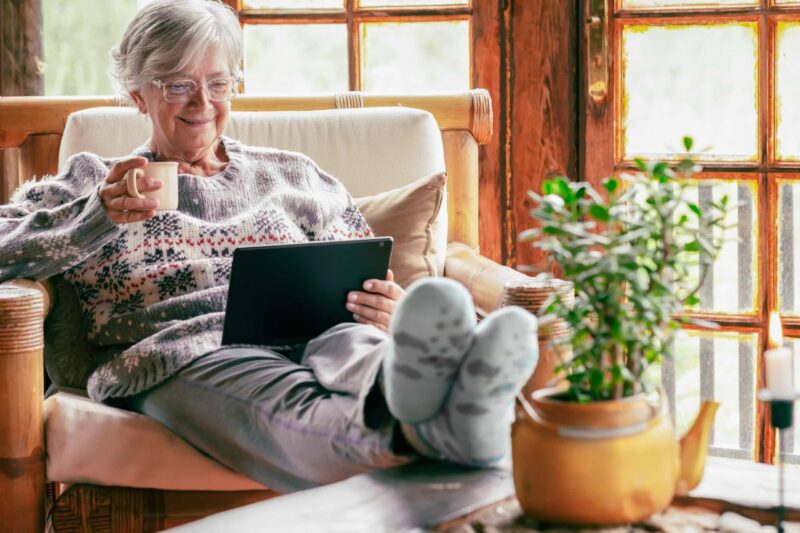
While activity is important, safety should always come first. Seniors should start slowly, listen to their bodies, and avoid pushing too hard. Even light exercise can be beneficial when done consistently.
A safe environment is just as important as the exercise itself. Make sure floors are clear of clutter, rugs are secured, and supportive shoes are worn to prevent slipping. Having a sturdy chair, wall, or rail nearby during balance exercises provides added confidence.
It is also wise to watch for warning signs. If dizziness, shortness of breath, or chest discomfort occur, activity should stop immediately. These may be signals to rest or consult a healthcare provider before continuing.
Finally, seniors should speak with their doctor before starting any new routine, especially if they have existing health conditions. A physician can recommend safe exercises tailored to individual needs, ensuring activity is both beneficial and risk-free.
Conclusion
Helping seniors stay active at home is one of the best ways to support long-term health and independence.
Gentle exercises like stretching, balance training, and light strength work build mobility and confidence, while everyday activities such as gardening or light housework keep the body moving naturally.
With the right motivation, a safe environment, and consistent routines, seniors can enjoy the benefits of physical activity without leaving their homes.
Regular movement not only improves strength and energy but also enhances mood, reduces the risk of falls, and helps seniors remain independent for longer.

